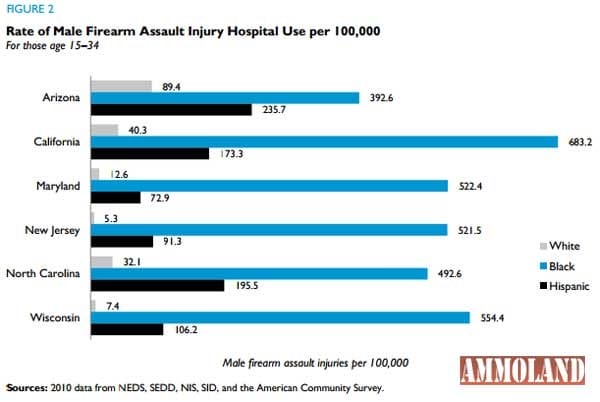
U.S.A. –-(AmmoLand.com)- This writer has been interested in the percent of fatalities of people who are deliberately shot, for decades. It is not an easy number to quantify. The inverse of that number is the percent of those shot who survive.
According to Battle Casualties and Medical Statistics: U.S. Army Experience in the Korean War, 13.5% of troops shot with bullets in Korea, died. Most of those were from rifle and machine gun fire, hit with full metal jacketed bullets.
In 2014, this correspondent looked at numbers from Wisconsin (young, black, males) and Chicago. The Wisconsin numbers were from 2010, Chicago numbers were from 2013 and 2014.
In Wisconsin, in 2010, the number was 11.4% fatalities for young, black, males. Source: Lethality of shootings in Wisconsin, 2014, Ammoland,
In Chicago, for part of 2014, it was 14.8%. For 2013 it was 17.1 %. Those numbers looked reasonably similar to the casualty statistics for the Korean War.
A 2017 study reveals that is happenstance.
Information collected by Jeff Asher at fivethirtyeight.com shows a significant difference in the lethality of shootings per city. Jeff did a good job in collecting data from different cities over several years.
Asher analyzed 14 cities to determine the percentage of shootings which resulted in death. These numbers were for 2016. In the cities Asher tabulated, the three highest were Baltimore Maryland, 29%; New Orleans, Louisiana, 27.9%; and Newark, New Jersey, at 25.3%. The three lowest cities were Boston, Massachusetts, at 15.3%; Charlotte, North Carolina, at 12.5%; and Cincinnati, Ohio, at 12.2%.
In the middle, were Milwaukee, Wisconsin at 17.6%, San Francisco, California, at 17.1%; and Philadelphia, Pennsylvania, at 16.8%. Chicago and New York are 16.3% and 16.5%; Detroit, Michigan, Louisville, Kentucky, and Nashville, Tennessee are:
- 20.7%
- 20.2%
- 19.7%.
The numbers did not vary much by year, for each location. Consider the numbers in Chicago from HeyJackass.com:
Numbers calculated from the site, for year through July, percent killed:
- 2014 16.5%
- 2015 17.3%
- 2016 16.8%
- 2017 19.0%
- 2018 19.1%
- 2019 18.8%
- 2020 19.3 %
- 2021 17.2% thru July 21.
The significant variation in the numbers by the city can be the result of many factors. Asher noted a large percentage of the casualties in Baltimore, the city with the highest fatality rate, are very close to one of the most advanced trauma centers in the nation. He suggests access to advanced trauma care is not a major factor.
The suspicion of this author is the intention, formed by local culture, is very significant. If the local culture and mythos promote the death of the adversary as the ideal goal, more people will be killed.
If the local culture and mythos promote shooting as a means of avoiding danger and escaping a situation; there will be a lower percentage of fatalities.
Many other factors are difficult to take into account. Everything from population density to age distribution, to the number of shots fired, to police response times and percent of cleared homicides could make significant differences.
These numbers only represent those who are hit. Victims which were missed are not counted. It is nearly impossible to define a miss which was intended to hit separate from a miss by intention or happenstance. In some locations, minor wounds may not be reported, so as to avoid official notice. Such avoidance could make a significant difference in percentages. It is possible a significant number of shots fired in anger are passed off as accidents.
It is much better to be missed or missing from the scene of a shooting than to be counted among the casualties.
About Dean Weingarten:
Dean Weingarten has been a peace officer, a military officer, was on the University of Wisconsin Pistol Team for four years, and was first certified to teach firearms safety in 1973. He taught the Arizona concealed carry course for fifteen years until the goal of Constitutional Carry was attained. He has degrees in meteorology and mining engineering and retired from the Department of Defense after a 30-year career in Army Research, Development, Testing, and Evaluation.
The post Data Shows Percent of Fatalities in People Hit by Gunfire: Highly Variable, by City appeared first on AmmoLand.com.
from https://ift.tt/3li0WPU
via IFTTT

No comments:
Post a Comment